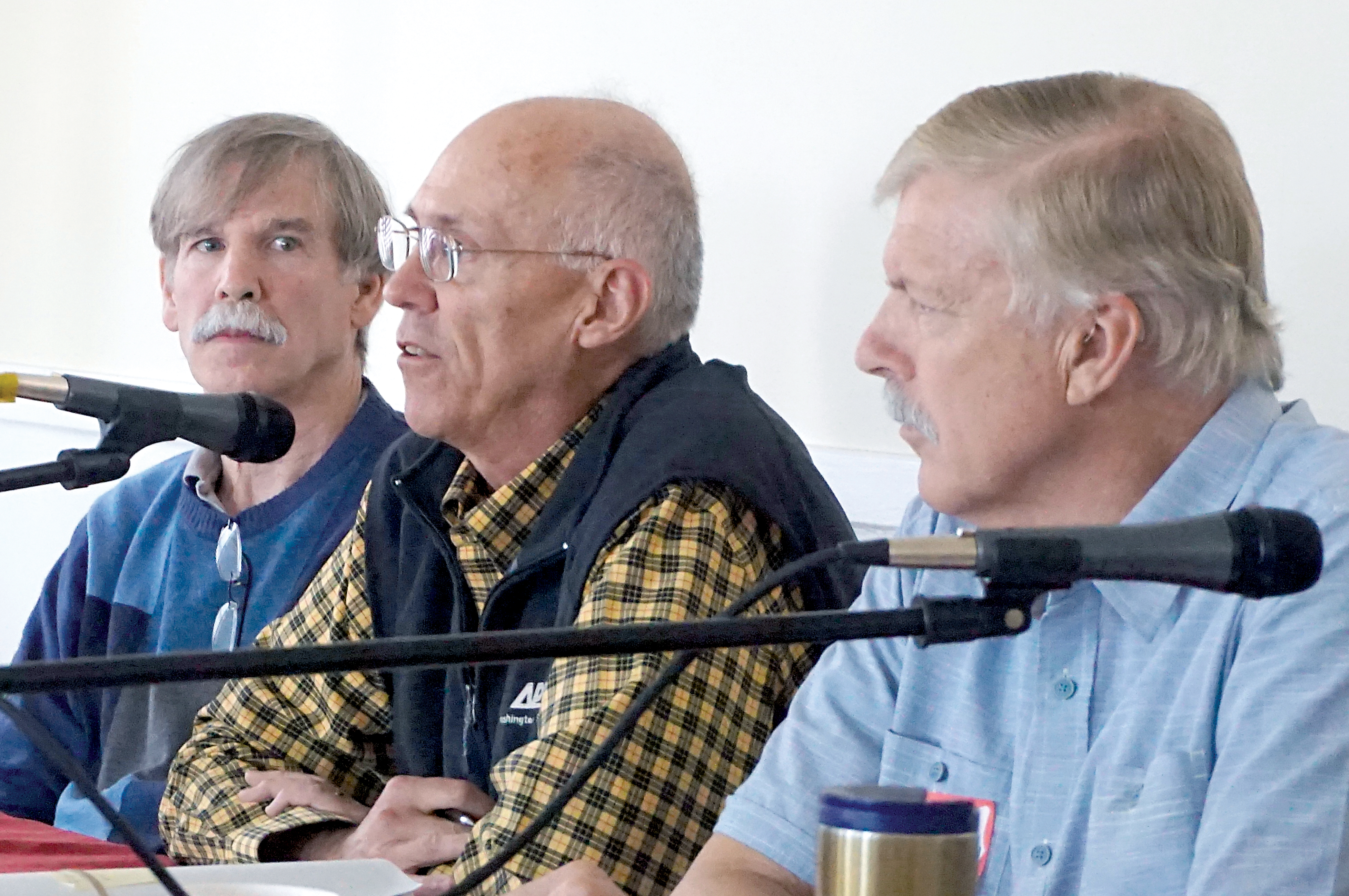PORT TOWNSEND — The sea level in Port Townsend and surrounding areas is expected to rise in the coming decades and area agencies need to begin to prepare for it, said participants in a Sea Level Summit.
“We are entering a time period of unprecedented uncertainty and transformative change,” said Eric Toews, the Port of Port Townsend’s planning director, at Friday’s meeting in the Point Hudson Marina Room.
“We may be able to kick the can down the road for a considerable period of time, but ultimately we are going to have to make some fundamental changes that will be required whether we wish to accommodate them or not,” Toews said.
According to Ian Miller, Washington Sea Grant’s coastal hazards specialist on the Olympic Peninsula, there is a 50 percent chance that the sea level around Port Townsend will rise 0.9 feet by 2050 and by 2.4 feet by 2100.
The purpose of the summit was to begin a conversation as to how a rise in sea level would impact the community’s institutions, infrastructure, economy and way of life.
It drew about 60 people, including representatives of Jefferson County, the city of Port Townsend, the Jefferson County Public Utility District, the Port of Port Townsend, and business and community leaders.
It was jointly sponsored by EDC/Team Jefferson and the North Olympic Peninsula Resource Conservation & Development Council, whose executive director, Kate Dean, served as moderator.
Dean began the session by saying it was not the place to question the possibility of climate change “because it’s going to happen.”
Instead, she said, the session was a place to prepare to adapt to the change rather than attempt to mitigate its effects.
While agreeing with the need to act, Ken Clow, Port Townsend Public Works director, said short-term needs can take precedence over long-term goals.
“We have a lot of other things we deal with that are way more pressing on a day-to-day basis,” he said.
“There are some engineering needs but funding them takes money away from other infrastructure needs and social programs.”
He said that anything that would affect the city water supply is of major concern.
The current system uses gravity to move water.
That might have to change.
“Gravity is reliable and cheap,” he said.
“But when the sea level comes up, we will need to find other methods to get the stormwater out.”
Clow spoke on a panel which included Toews, PUD Manager Jim Parker and David Goldsmith, the interim director of the Jefferson County Department of Community Development.
“The rise in the sea level is a symptom of global change,” Goldsmith said.
“Looking forward, I don’t think anyone really has a concept as to what this will look like and how we will address it.”
Goldsmith said he is less worried about predicted rises in sea level than in the additional tidal water that could be generated by major storms.
“We need to determine how we get the policies in place before we get around to the actual work that needs to be done,” Goldsmith said.
“The policies need to be built on a consensus of the community.
“Once we get the policies developed, we can work on the regulatory side.”
Toews said that public agencies will need to re-examine projects that are already in process, citing the $5 million replacement of the Point Hudson jetty at a time where the port has very limited indebtedness capacity.
“There is a real fear that we are in a position of misallocating our resources for the long term,” he said.
“It makes great sense in the near term but we need to have a conversation about redeploying some of these resources to give them a long-term future.”
For more information about climate change studies, see www.noprcd.org.
________
Jefferson County Editor Charlie Bermant can be reached at 360-385-2335 or cbermant@peninsuladailynews.com.
